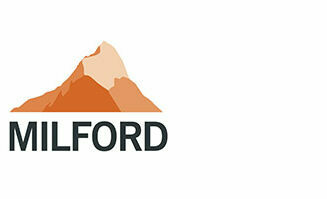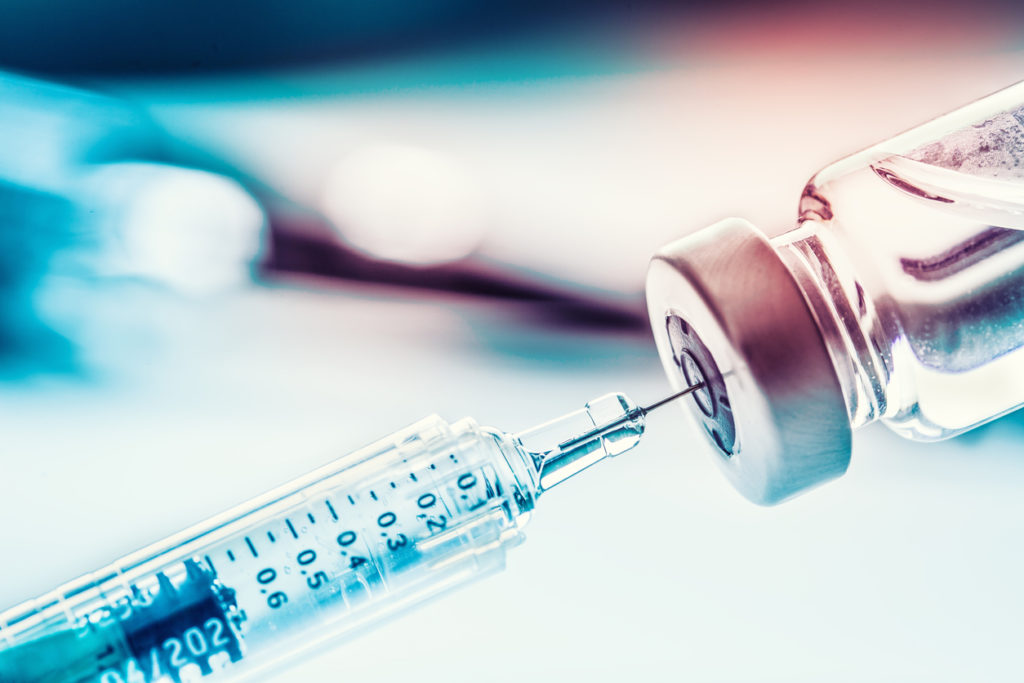
InvestNow News – 7th August – Milford – Vaccine Time: The Beginning of the Pandemic’s End
Article written by Marissa Rossi, Milford – 5th August
In total, there are 177 novel coronavirus vaccines in development globally and 6 in Phase III trials, the final stage of clinical evaluation before regulatory approval can be granted. Of these, the 4 candidates you have likely heard about are the US company Moderna (with Fauci/NIH), the German company BioNTech (with Pfizer) and the University of Oxford in the UK (with Astrazeneca). Each of these rely on novel vaccine methods that, if successful, will result in the first regulatory approval for a vaccine of their kind. Closer to home, but further down the field, is the University of Queensland, with a vaccine that just commenced Phase I clinical trials.
We know from published trial data so far that in small studies, all three vaccines were safe and produced some level of “neutralising antibodies”. This means in a test tube, antibodies contained in the blood of vaccinated participants acted to decrease replication of the SARS-CoV-2 virus (known as COVID-19). An excellent start.
Unprecedented funding, resources and technology advances have materially expedited some aspects of COVID-19 vaccine delivery relative to historic timelines. A licenced vaccine, widely available “several months into 2021” as immunologist and White House Coronavirus Task Force member, Dr Anthony Fauci suggests, would smash our previous record of four years for the mumps vaccine, licensed in 1967. This will be achieved through a combination of novel technology platforms, overlapping clinical trials (two phases being conducted simultaneously), and by building vaccine manufacturing capacity ahead of trial completion.
Up until a month ago, the world speculated about the extent health care regulators would allow rules to be bent in the race to make a COVID-19 vaccine available. In late June, the FDA announced even Emergency Use Approval would not be granted before completion of Phase III trials, and unless a vaccine could be proven to be “at least 50% effective”.
While there is clearly a trade-off between time to approval and the stringency of regulatory hurdles, the less obvious cost of rushing a vaccine is the risk to public confidence. The highly contagious nature of the novel coronavirus means, to achieve herd immunity, an estimated 70% of the population need to be protected from infection. Mathematically, this cannot be achieved with a vaccine that is 50% effective, even if 100% of the population are vaccinated. Every 1% of the population that refuse to be injected with a hastily approved vaccine detract further from this goal.
The immunology of the novel coronavirus is complicated and poorly understood. Scientists still don’t know whether there is a minimum level of antibodies that will protect against reinfection, and if so, what that level is, or how long immunity will last. The role and importance of T-cells and B-cells as part of the body’s immune response is also unclear.
In the context of this uncertainty, it will be no mean feat to prove 50% of vaccinated participants who are exposed to the virus do not become infected, as the FDA requires. Even Moderna’s supremely confident CEO, Stéphane Bancel, told CNBC news last week he estimates his company’s vaccine, now in early Phase III trials, has only a 75% chance of meeting this threshold.
Contemplating the manufacturing capacity required to vaccinate 7.8b people globally is overwhelming. Exacerbating this, is evidence that suggests a second booster vaccination may be required within 21-28 days of the first dose, and that antibody protection halves every 2-3 months. It is entirely plausible that protecting one individual from COVID-19 for a period of 12 months may require 3 doses of vaccine, transported in 3 glass vials sealed by 3 rubber stoppers, and administered in 3 syringes. Refrigerated distribution and cold storage may also be required.

As it did during the H1N1 Swine Flu Pandemic, the world will find itself in a situation where demand materially exceeds supply. At this time, the Australian Government made it clear to Australian manufacturer CSL that it must fulfil the government’s domestic needs before exporting vaccine offshore. It seems the national interest of wealthy developed nations will again drive global allocations of vaccine.
Meanwhile, a family friend from the Philippines recently explained that because of classroom overcrowding, her nieces and nephews at home have been told school cannot return until a vaccine becomes available.
Helen Clark, a former New Zealand Prime Minister, is advocating for a “people’s vaccine” that does not grant exclusive intellectual property rights to individual corporations, especially as they’ve been funded by billions of dollars of taxpayers’ money. Clark cites the response of American virologist Jonas Salk when he was asked who owned the patent to the polio vaccine he invented. Salk famously replied, “There is no patent. Could you patent the sun?”.
However the vaccine race unfolds, New Zealanders and Australians are unlikely to receive it first or last. We may be first if the University of Queensland vaccine is successful and overtakes the existing frontrunners. In that case, CSL says production technology can be scaled up to produce 100 million doses by the end of 2021. On the other hand, we are unlikely to be last, because we can afford to pay for a vaccine and have powerful allies, like the US and the UK.
Either way, markets will begin to price vaccine success long before we line up to receive our shots. Trial data suggesting even one vaccinated Phase III participant has been exposed to COVID-19 and not become infected is likely to be perceived as the beginning of this pandemic’s end. At this point, we anticipate a sharp rotation out of safe, defensive names towards cyclicals with earnings leveraged to the economy, which markets will assume are poised for recovery. At Milford, our forecasts for GDP and company earnings will be informed by what the data tells us about the effectiveness of the vaccine, the timeline for it to be made widely available and the expected rate of adoption by the population.
Disclaimer: The material contained herein is based on information believed to be accurate and reliable although no guarantee can be given that this is the case. This is intended to provide general information only. It does not take into account your investment needs or personal circumstances. It is not intended to be viewed as investment or financial advice. Before making any financial decisions, you may wish to seek independent financial advice.
InvestNow News – 7th August – Milford – Vaccine Time: The Beginning of the Pandemic’s End
Article written by Marissa Rossi, Milford – 5th August
In total, there are 177 novel coronavirus vaccines in development globally and 6 in Phase III trials, the final stage of clinical evaluation before regulatory approval can be granted. Of these, the 4 candidates you have likely heard about are the US company Moderna (with Fauci/NIH), the German company BioNTech (with Pfizer) and the University of Oxford in the UK (with Astrazeneca). Each of these rely on novel vaccine methods that, if successful, will result in the first regulatory approval for a vaccine of their kind. Closer to home, but further down the field, is the University of Queensland, with a vaccine that just commenced Phase I clinical trials.
We know from published trial data so far that in small studies, all three vaccines were safe and produced some level of “neutralising antibodies”. This means in a test tube, antibodies contained in the blood of vaccinated participants acted to decrease replication of the SARS-CoV-2 virus (known as COVID-19). An excellent start.
Unprecedented funding, resources and technology advances have materially expedited some aspects of COVID-19 vaccine delivery relative to historic timelines. A licenced vaccine, widely available “several months into 2021” as immunologist and White House Coronavirus Task Force member, Dr Anthony Fauci suggests, would smash our previous record of four years for the mumps vaccine, licensed in 1967. This will be achieved through a combination of novel technology platforms, overlapping clinical trials (two phases being conducted simultaneously), and by building vaccine manufacturing capacity ahead of trial completion.
Up until a month ago, the world speculated about the extent health care regulators would allow rules to be bent in the race to make a COVID-19 vaccine available. In late June, the FDA announced even Emergency Use Approval would not be granted before completion of Phase III trials, and unless a vaccine could be proven to be “at least 50% effective”.
While there is clearly a trade-off between time to approval and the stringency of regulatory hurdles, the less obvious cost of rushing a vaccine is the risk to public confidence. The highly contagious nature of the novel coronavirus means, to achieve herd immunity, an estimated 70% of the population need to be protected from infection. Mathematically, this cannot be achieved with a vaccine that is 50% effective, even if 100% of the population are vaccinated. Every 1% of the population that refuse to be injected with a hastily approved vaccine detract further from this goal.
The immunology of the novel coronavirus is complicated and poorly understood. Scientists still don’t know whether there is a minimum level of antibodies that will protect against reinfection, and if so, what that level is, or how long immunity will last. The role and importance of T-cells and B-cells as part of the body’s immune response is also unclear.
In the context of this uncertainty, it will be no mean feat to prove 50% of vaccinated participants who are exposed to the virus do not become infected, as the FDA requires. Even Moderna’s supremely confident CEO, Stéphane Bancel, told CNBC news last week he estimates his company’s vaccine, now in early Phase III trials, has only a 75% chance of meeting this threshold.
Contemplating the manufacturing capacity required to vaccinate 7.8b people globally is overwhelming. Exacerbating this, is evidence that suggests a second booster vaccination may be required within 21-28 days of the first dose, and that antibody protection halves every 2-3 months. It is entirely plausible that protecting one individual from COVID-19 for a period of 12 months may require 3 doses of vaccine, transported in 3 glass vials sealed by 3 rubber stoppers, and administered in 3 syringes. Refrigerated distribution and cold storage may also be required.

As it did during the H1N1 Swine Flu Pandemic, the world will find itself in a situation where demand materially exceeds supply. At this time, the Australian Government made it clear to Australian manufacturer CSL that it must fulfil the government’s domestic needs before exporting vaccine offshore. It seems the national interest of wealthy developed nations will again drive global allocations of vaccine.
Meanwhile, a family friend from the Philippines recently explained that because of classroom overcrowding, her nieces and nephews at home have been told school cannot return until a vaccine becomes available.
Helen Clark, a former New Zealand Prime Minister, is advocating for a “people’s vaccine” that does not grant exclusive intellectual property rights to individual corporations, especially as they’ve been funded by billions of dollars of taxpayers’ money. Clark cites the response of American virologist Jonas Salk when he was asked who owned the patent to the polio vaccine he invented. Salk famously replied, “There is no patent. Could you patent the sun?”.
However the vaccine race unfolds, New Zealanders and Australians are unlikely to receive it first or last. We may be first if the University of Queensland vaccine is successful and overtakes the existing frontrunners. In that case, CSL says production technology can be scaled up to produce 100 million doses by the end of 2021. On the other hand, we are unlikely to be last, because we can afford to pay for a vaccine and have powerful allies, like the US and the UK.
Either way, markets will begin to price vaccine success long before we line up to receive our shots. Trial data suggesting even one vaccinated Phase III participant has been exposed to COVID-19 and not become infected is likely to be perceived as the beginning of this pandemic’s end. At this point, we anticipate a sharp rotation out of safe, defensive names towards cyclicals with earnings leveraged to the economy, which markets will assume are poised for recovery. At Milford, our forecasts for GDP and company earnings will be informed by what the data tells us about the effectiveness of the vaccine, the timeline for it to be made widely available and the expected rate of adoption by the population.
Disclaimer: The material contained herein is based on information believed to be accurate and reliable although no guarantee can be given that this is the case. This is intended to provide general information only. It does not take into account your investment needs or personal circumstances. It is not intended to be viewed as investment or financial advice. Before making any financial decisions, you may wish to seek independent financial advice.



